The Black Race will attain global prosperity when its major groups can fully exploit their socioeconomic advantages in their largest market – Nigeria – the Negro Area! With the largest and most diverse Black population based in a naturally rich and fertile West African sub-region, this has been the springboard of the majority of ancient and current global economies and empires.
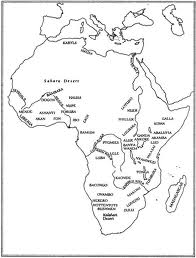
Proven to be the origin of humanity, it has been the source of resources both human and natural through the various stages of human evolution and development. Initially it’s rich ecosystem full of protein building DNA foods like palm oil and kennels, flying termites etc was used to advance the Homo species. It is noted that different homo species that migrated out of the area lost the opportunity to further evolve and evidence shows that the more advanced species always evolve from the area to colonize their less evolved that had spread across the globe.
The first agricultural tools were devised there 70,000 yrs before it spread to Eurasia. After Homo Erectus evolution to Homo Sapien Sapien and the Ice Age, when Eurasia defrosted, structured thought and analysis was passed from Nigeria to as far as China, in the form of the Ifa divination system that formed the basis of I Ching and other knowledge bases.
The two world population centers, due to their fertile natural habitats, were the Indus Valley and present day Nigeria. From the Northern Nigerian grasslands eastwards to Kashmir, India all that was available was desert land, through which the first global trade network was established and known as the Trans-Sahara trade route.
African gold and cotton was exchanged for Asian silk. Midway trading empires were to evolve in Ancient Egypt and Mesopotamia, which synergized the civilizations of the two fertile regions into technological feats and religions.
Due to their scant environments Egypt, the Middle East and later Southern Europe were to survive exchanging West African gold brought to the North African coast with Indian Spices and food. Though the trade between Africans and Indians were initiated by Black Africans, Eurasians in the Caucasian Mountains of Iran and Russian eventually drove back the Black Africans from the Black empire, Elam on the northwest of India, to Mesopotamia and then to the Nile Delta in order to control the trade.
 When Eurasians took over the Greek islands across the Nile Delta, the trade route of African goods switched to Ethiopia and later Carthage. Eurasians then shifted from Greece to Rome directly across Carthage in order to once again control the trade. In what is solid proof that the main source of African produce came from West Africa, subsequent empires after the destruction of Egypt and Carthage were westward along the North African coast.
When Eurasians took over the Greek islands across the Nile Delta, the trade route of African goods switched to Ethiopia and later Carthage. Eurasians then shifted from Greece to Rome directly across Carthage in order to once again control the trade. In what is solid proof that the main source of African produce came from West Africa, subsequent empires after the destruction of Egypt and Carthage were westward along the North African coast.
The westward spread along the North African coast led to a corresponding population increase in Southern Europe. Also, the coming together of the races in Egypt and along the North African coast led to the creation of Semite/mulatto groups like the Jews, Arabs and Berbers. The Eurasians were to adopt African practises from Ancient Egypt, especially religion to create an order of knowledge and laws to unite and focus their people, in the form of Christianity and the Holy Roman Empire. Africans were labelled the Worshippers of the Dead – Nekro Manteia in Greek, which later became Nigro Mantia in Latin and the mantia was later dropped and it became Negro, Nigger, Niger in modern European languages.
However the adaptation of African Religion led to the corruption of revering ancestors to that of money and scare resources, as people with resources were labelled unbelievers and marked out for attack, domination and exploitation in the name of God. Due to the intermarrying and the creation of mixed races, Eurasians were to leave their Afro-Asian offspring in charge of their occupied African territories. This led to the Arabs, with the creation of Islam, taking over from their Mesopotamian strongholds through Egypt to Northwest Africa, ultimately to control West African gold trade routes.
The Arabs were to extend their empires to Morocco and through Tunis (Carthage) invaded Europe, where they were to rule for 500 years until Europeans were able to convert Chinese recreational gunpowder to military use. From about 1276, Europeans were to push out the Arab and Black Muslims and Portugal gained its first foothold on African soil in 1415 with the capture of Ceuta. They slowly moved along the coast and by 1440s reached West Africa where they were to meet the two largest Original African kingdoms – Bini and Kongo.
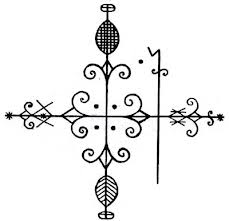 From 1440s to 1500, Europeans engaged in mutually beneficial trade with the African kingdoms. At the time they discovered that West Africa had a wide range of goods apart from gold that could be traded with the sub-Indian continent. There were natural and semi-manufactured products like cotton and most types of clothing, sugar cane and tobacco as well as beads. Among the various African goods copied was the sugarcane planted on the islands off the Africa coast.
From 1440s to 1500, Europeans engaged in mutually beneficial trade with the African kingdoms. At the time they discovered that West Africa had a wide range of goods apart from gold that could be traded with the sub-Indian continent. There were natural and semi-manufactured products like cotton and most types of clothing, sugar cane and tobacco as well as beads. Among the various African goods copied was the sugarcane planted on the islands off the Africa coast.
However, with the stumbling of Colombus upon the Americas, the Europeans decided to turn the Americas into plantations to duplicate tropical African goods. Unfortunately, due to the harsh rich insect life on the plantations, only those with sickle traits could survive and Africans were the only ones with such immunity. Hence, the birth of Trans-Atlantic Slavery and the beginning of the African Nightmare!
Since Portuguese and Spanish Jewish were the initial merchants, Portugal and Spain were to become world powers under the auspices of the Holy Roman Empire. Pope Alexander was to allocate West Africa and Brazil to Portugal and all American lands to the west of Brazil to Spain in 1497. This angered Northwest Europeans like the British and Francis, the King of France that demanded, ‘I should very much like to see the clause in Adam’s will that excludes me from a share’. This led to the breakup of Catholic Church within 50years of setting foot on the West African Garden of Eden as the British and French attacked the Catholics on sea and created their own religious sect called Protestantism.
By 1568, the Jews in Spain and Portugal revolted and moved to Holland to create a vibrant economy based on African slavery and American plantations. Away from the vagaries of monarchs, the Jews in Netherlands created the first modern joint stock companies to free their trade from political decisions. Hence, the Dutch built a global economy and dominance that lasted nearly a hundred years.
The English and French were to take over from the Dutch due to the fact that their political backing pursed a policy of offloading their citizens to the Americas where they built ‘colonies of settlements’ as opposed to the Dutch colonies of trade. Eventually, they were to get an upper hand as they restricted trade to their nationals which killed off Dutch business. The British were to dominate the world since they easily converted their slaves ships to warships used to attack and seized territory.
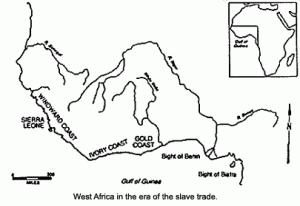 The bulk of the slaves were initially taken from the Senegambia and Angola grasslands on the outskirts of the Black heartlands situated in the forest. However, at the peak of the slave trade majority of slaves were to come from the Nigerian coasts called the Slave Coast, where 400,000 guns were dumped every year to fuel anarchy and war that produce more slaves. The British were by far the largest slave dealers followed by the French.
The bulk of the slaves were initially taken from the Senegambia and Angola grasslands on the outskirts of the Black heartlands situated in the forest. However, at the peak of the slave trade majority of slaves were to come from the Nigerian coasts called the Slave Coast, where 400,000 guns were dumped every year to fuel anarchy and war that produce more slaves. The British were by far the largest slave dealers followed by the French.
Just like the Romans that got kicked out of Africa by their offspring left in Africa, the European offspring in the Americas were to kick out the British, create their own state and brand of Christianity. The British and French had overstretched their resources fighting with each other and their attempt to pass down the costs resulted in French and American Revolution.
The French Revolution at home gave Africans in the Caribbean Islands the chance to launch their own Ogun Revolution in the worst slave island. The Africans launched the revolution with an Ogun festival in August 1789, which led to the freeing of Africans across the Caribbean and chasing the colonists from South America.
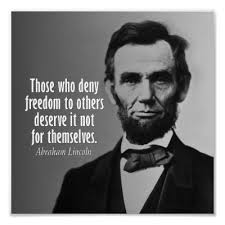
In the meantime, the USA grew rich on slavery used to plant cotton and tobacco, of which a sizable proportion was sold in West Africa, and the production of arms. However, there were numerous bloody revolts and from the experience of the Haitian Revolution, the European merchants began to rethink their business structure. The push really came from the British merchants that realized that their cousins in the Americas now possessed a huge unfair cost advantage with their large slave labour. So they pushed for colonization, whereby Africans would be enslaved in their own lands to produce the crops required, instead of being shipped to the Americas where they caused bloody expensive revolts. Eventually the business classes concentrated in North USA overwhelmed the Southern farmers, who had used the economic power derived from slavery to wield enormous political power over them, as most presidents came from Virginia to the South.
As the arms industry had grown with the slave trade, the initial fall in the trade had seen the iron diverted to other means like the building of railroads which opened up the North American market. When slavery ended and the building of railroads had reached an optimum level, the likes of JP Morgan and Carnegie were to fully turn to the arms industry as they took over popular sovereignity and governments.
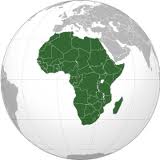 The British, having lost its American markets turned to China, and in order to give them a nearby Launchpad they built every infrastructure in Japan in the late 1800s. Also, with the creation of the machine gun, they and others began the SCRAMBLE FOR AFRICA officially launched with the Berlin Conference. The British, being more knowledgeable thanks to the Royal Geographic Society, took the juiciest parts of Africa – the Gold Coast (Ghana), the Slave Coast (Nigeria), the Gold Desert (South Africa) and Egypt. Although the French took the largest landmass, most of their colonies were desert lands with less people and resources combined than the single British colony of Nigeria.
The British, having lost its American markets turned to China, and in order to give them a nearby Launchpad they built every infrastructure in Japan in the late 1800s. Also, with the creation of the machine gun, they and others began the SCRAMBLE FOR AFRICA officially launched with the Berlin Conference. The British, being more knowledgeable thanks to the Royal Geographic Society, took the juiciest parts of Africa – the Gold Coast (Ghana), the Slave Coast (Nigeria), the Gold Desert (South Africa) and Egypt. Although the French took the largest landmass, most of their colonies were desert lands with less people and resources combined than the single British colony of Nigeria.
The huge Congo Basin, mostly on less fertile highlands, was not desired by the Western powers and was given to Leopold of Belgium, being a nephew of Queen Victoria. The Germans were to take Tanzania, Namibia and Rwanda. The Europeans, especially the French and Germans, were to exploit Africa and use the money to develop Eastern Europe and Russia.
The partition of Africa was not equal and lead to a war among the European colonists called the First World War. The war was to be won by those with African colonies with the most human and natural resources. Most important, it became obvious that capitalism was not capable of moving the economy forward without government investment through the war machinery. Private investors were naturally unwilling to move the required investment into the research and designing of new consumer goods, so the government had to go to war to divert resources. This was to be known as the military industrial complex.
 Before the First World War, designs of the automobile and radio had reached an advanced stage but private investment won’t support. However with the war, the government invested in what could be used to transport military personnel and their communication, which after the war became consumer goods in form of cars, radios and television. When the cycle of new products came to an end, there was a Great Depression which was only brought to an end with the Second World War and the development of war planes.
Before the First World War, designs of the automobile and radio had reached an advanced stage but private investment won’t support. However with the war, the government invested in what could be used to transport military personnel and their communication, which after the war became consumer goods in form of cars, radios and television. When the cycle of new products came to an end, there was a Great Depression which was only brought to an end with the Second World War and the development of war planes.
This was a war and boom cycle continues till today since after the 2nd World War came the Cold war, which brought government investment into computing technology and the internet that are at the core of todays’ world economy. In periods of low consumer demand, usually experienced every 7-14yrs, overheads were balanced through the emptying of existing stock and the development of new stock by going to war.
Nations that failed to push their economies with war planning and the military industrial complex were to face revolutions in their countries, like Russia and China, and had to evolve communist/socialist central planned economies to override the problem of moving private investment into required areas. Also, the Western nations developed welfare systems to pacify their masses from revolutions. With France and others having heavily invested in Russia before their revolution, Russia was able to maintain its level of development while helping China build its infrastructure. However, Russia was also to use military investment to keep its economy going and unemployment down.
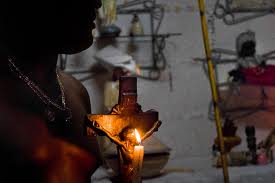 Due to Africans saving their European masters from the Germans and others in the two world wars, Africans worldwide had the moral capital to defeat the oppressors, or at least to gain more political freedoms if not economic freedoms. In the 1960s, most Africans got their civil rights and political independence, but which didn’t count for much without economic independence.
Due to Africans saving their European masters from the Germans and others in the two world wars, Africans worldwide had the moral capital to defeat the oppressors, or at least to gain more political freedoms if not economic freedoms. In the 1960s, most Africans got their civil rights and political independence, but which didn’t count for much without economic independence.
Their economies were destroyed and left moribund by the end of the 1990s, but thankfully in the 2000s were to enjoy high commodity prices from the Chinese, who also built up infrastructure.
China, unlike the Europeans, was to devise a better way to deal with its overheads and employment demands by sending ‘construction soldiers’ instead of military soldiers to Africa and South America. Although built at profit margins much lower than global rates and without imperialistic ambitions, China has been able to keep its economic engine going without a military industrial complex.

It is hoped that with the building of infrastructure, Africans will able to exploit their largest market, Nigeria, which all above mentioned empires had gained global prosperity from exploiting its human and natural resources. Nigeria at the core of a unified Pan-African market and government would be used to uplift the race and most importantly bring about an era of global economic justice.







